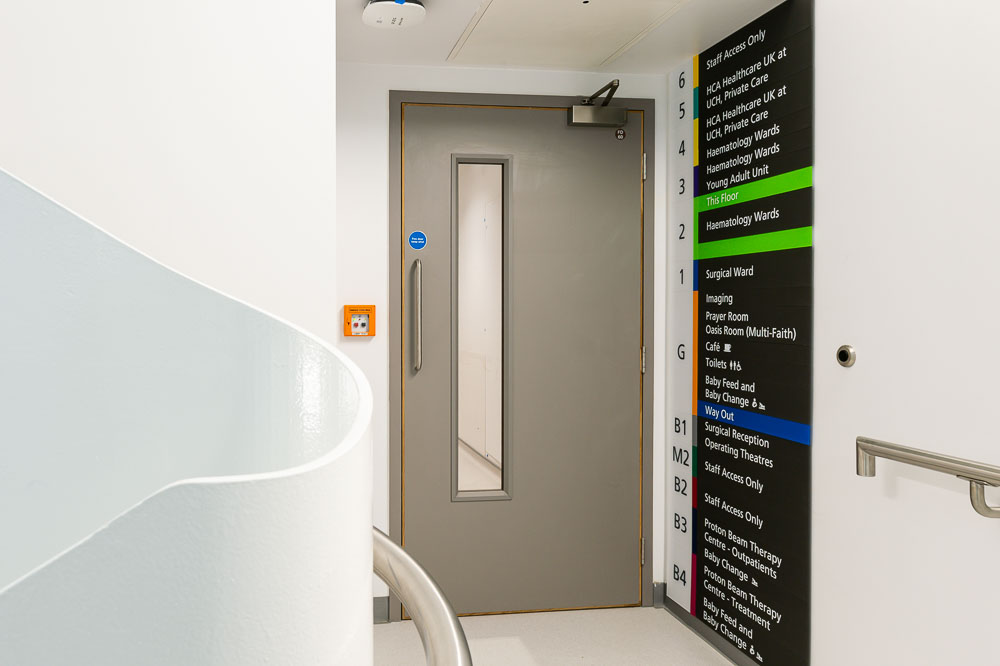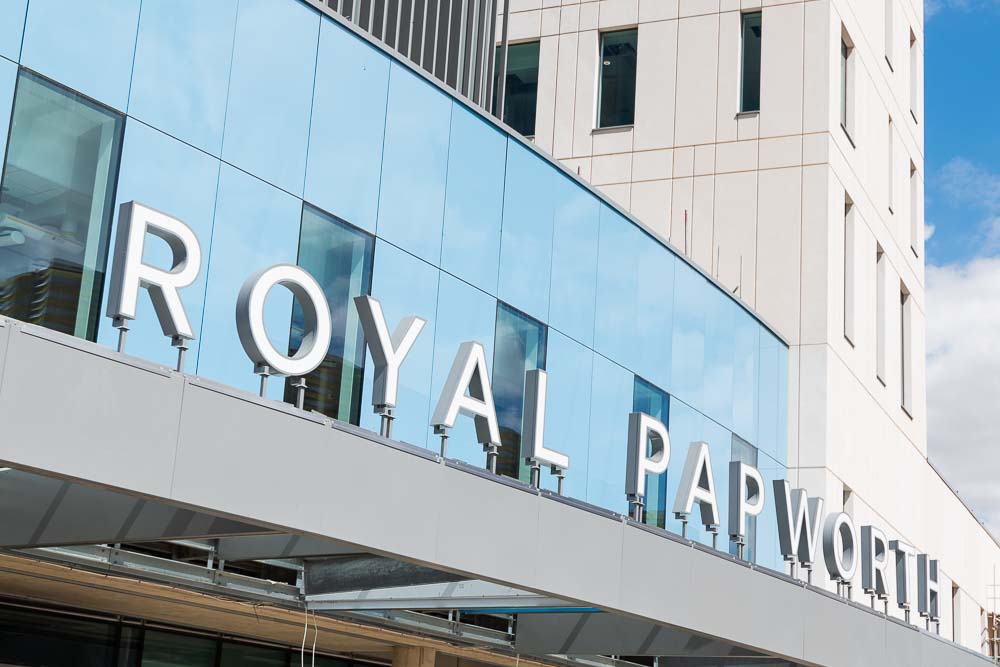Hospitals are one of the most complex environments to navigate. Factors that contribute to this complexity are, unless brand new, hospitals have usually been built up over many years, and the buildings added all look different to each other inside and out. Buildings change purpose over time and the layout may not make much sense. Due to the nature of being unwell, a patient may find it even more difficult to find their way around. There can be dozens of different departments, entrances and clinics. Even more confusingly, some can be called similar names, such as Orthotics and Orthoptics.
Anyone who visits a hospital is probably under a lot of stress already so anything that can be done to reduce stress and improve the experience, should be. This makes it essential to implement strategic wayfinding signage that guides them around the facility with ease.
When investigating how to enhance the patient experience in a hospital, here at xsign, we believe implementing superior wayfinding signage has a significant positive impact.
Why is good hospital wayfinding signage important?
Hospital wayfinding signage refers to a system of signs and visual cues that guide patients, visitors, and staff through the complex and often confusing layout of a hospital. The signs should provide clear and concise directions to specific wards, clinics, and facilities.
With the increasing size and complexity of modern hospitals, good wayfinding signage is essential for ensuring that patients and visitors can find their way around. Getting from A to B quickly and easily can be critical, not just for wellbeing but also to reduce late arrivals to appointments and the amount of people wandering the grounds at any given time.
From the perspective of a patient, being able to easily find where they need to go reduces stress and confusion. In addition to improving the patient experience, wayfinding signage can also increase operational efficiency and reduce costs by minimising the amount of time staff and volunteers spend providing directions and assistance. Another benefit comes from reducing the risk of individuals getting lost or wandering into restricted areas.



A good hospital wayfinding strategy is needed because it takes the diversity of patients into account. Each patient has individual circumstances that may influence how they interpret directions or perceive their environments. Any number of patients could have dementia, visual or hearing impairments, mobility restrictions, cognitive impairments, neurodiversity or even a fear of hospitals. All of these conditions will affect how they, or their carer, navigates.
Designing Hospital Wayfinding Signage To Enhance Patient Experience
There are several factors designers must carefully consider when planning a hospital wayfinding strategy. Out of them, location and style have the most significant impact on the patient experience.
Ideal Placement and Location of Signs
The optimum placement of signs requires careful planning and testing. Designers will take the prescribed and natural routes and flow of people in and around the hospital into account. The strategy will include placing signs at visible heights for wheelchair users and short people, the proximity of obstructions, other signs and pinch points.
For example, a map of the area will not be as helpful if it is partially hidden by a door that is kept open, or in a tight space. This kind of sign attracts lots of people looking at it for a few minutes, so ideally it should be in an open space with no obstructions. Similarly, they will choose precise locations for repeater signs and understand how far away from places the signs should start.
By prioritising patient needs and taking a user-centred approach, designers will measure the best locations.
Standards and Styles of Hospital Signage
An excellent wayfinding signage strategy will ensure all the signs are uniform and created to the same standard. Adding differences into signage can cause confusion and panic. Signs for emergency exits or fire assembly points need to stand out as different to the normal wayfinding signage, so it is important to make sure they do not clash.
The style of hospital signage should be focused on accessibility over aesthetics. Contrasting colours, large fonts, pictograms, symbols, and textured lettering work together to make a sign easier to read for patients with visual impairments, neurodiversity, or dementia. Colour schemes that marry signs and areas of the hospital, reassure patients they are in the right places.
Using the same pictogram or symbol to mean the same thing across the whole hospital is important. For example, the pictogram for breastfeeding facilities should be the same on each sign in each building to avoid confusion about the meaning.
Investing in well-designed hospital wayfinding signage is vital for any hospital looking to enhance the patient experience, as well as safety and operational efficiency. Excellent hospital signage is not just functional, nor is it about looking good; it’s about creating a welcoming environment that reduces anxiety and promotes better care. To view case studies of the signage we’ve designed in healthcare environments, and learn more about this complex work, visit our Hospital Signs page.



